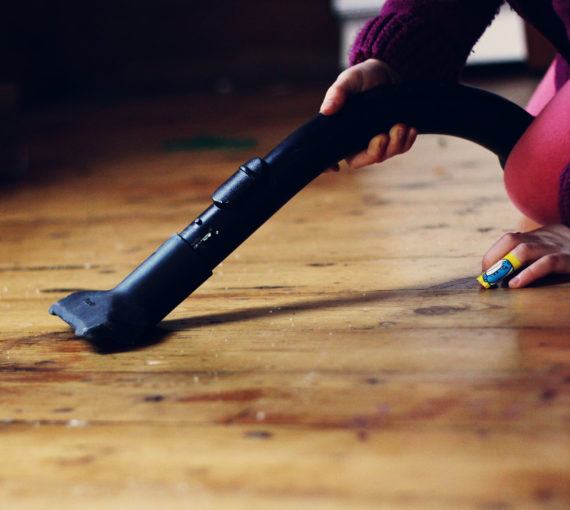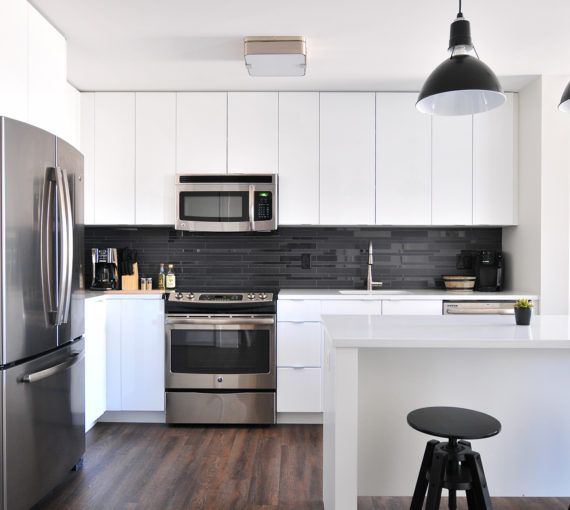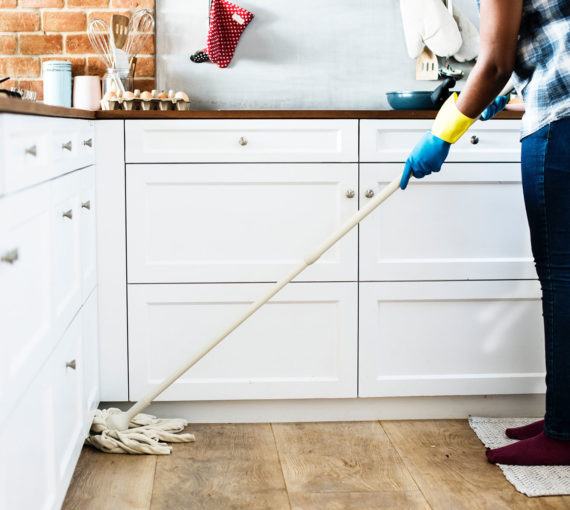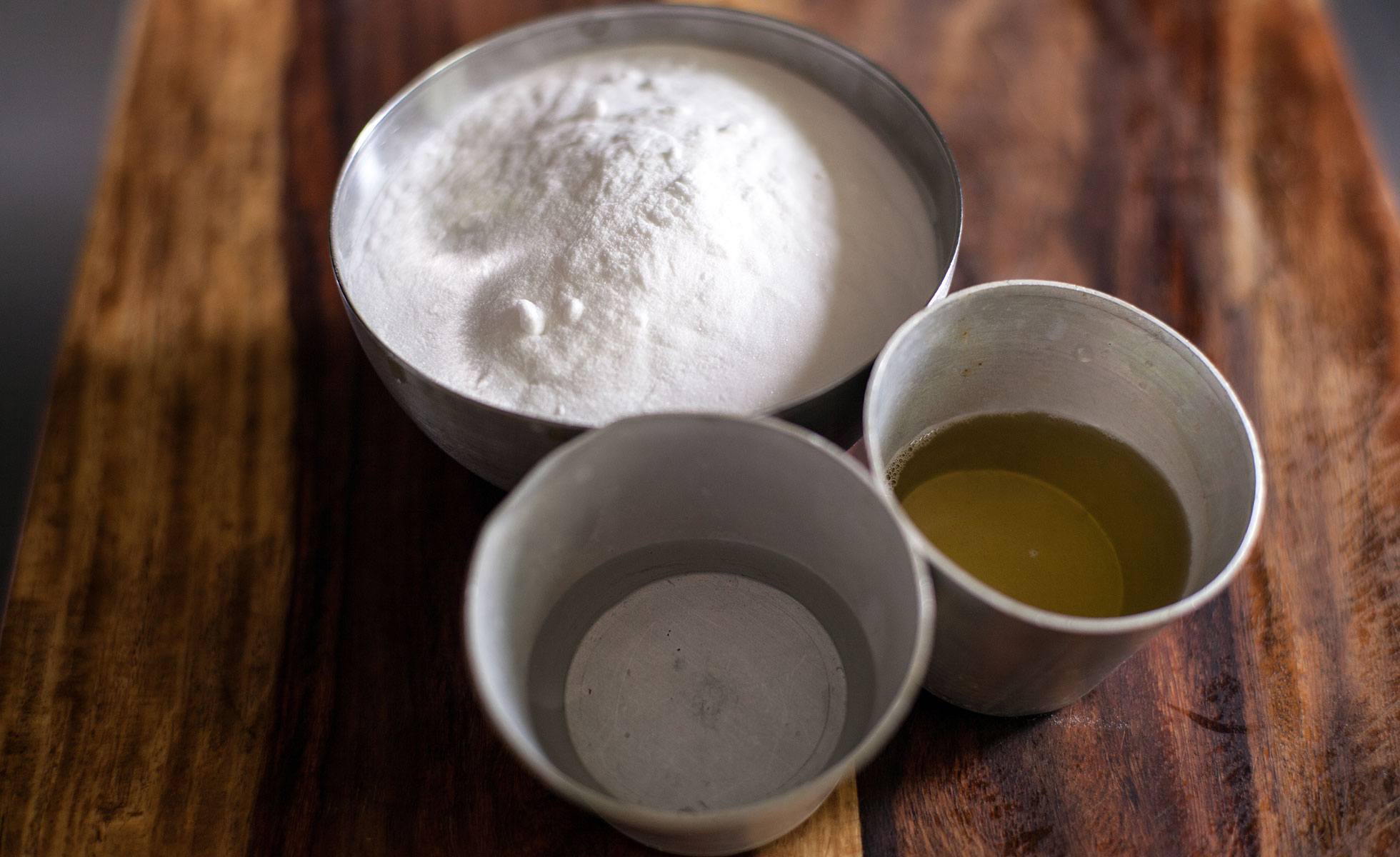
Made with only three ingredients, this scour performs best in the bathroom — cleans tub, tiles, sinks and toilets. Tackles mould and mildew, too! (Photo: Shannon Ruth Dionne)
“All-purpose” means these DIY cleaners tackle dirt and grime everywhere in the home! (Exception: laundry and windows. And they’re so safe, kids can clean, too.
You can shop smarter to avoid harmful chemicals in store-bought options, but why not try and make your own?
All-purpose spray
Cleans tubs, tiles, counters, high chair trays, microwaves, floors and more.
Time to make: five minutes
Shelf life: about six months
- 1.5 L (6 cups) water
- 60 ml (¼ cup) liquid castile soap
- 5-10 drops (optional) essential oils, e.g., thyme
Combine ingredients in a big bowl or jug. Stir and pour into labelled spray bottle(s). (This is a massive batch. Keep a bottle under kitchen and bathroom sinks, in the dining room, etc.)
Note: Choose liquid castile soap that doesn’t contain palm oil. You can also use liquid castile soap that already contains organic essential oils. However, for people with environmental sensitivities, scents (including essential oils) can be painful, debilitating and isolating. Choose unscented liquid castile soap if someone you care about is scent sensitive.
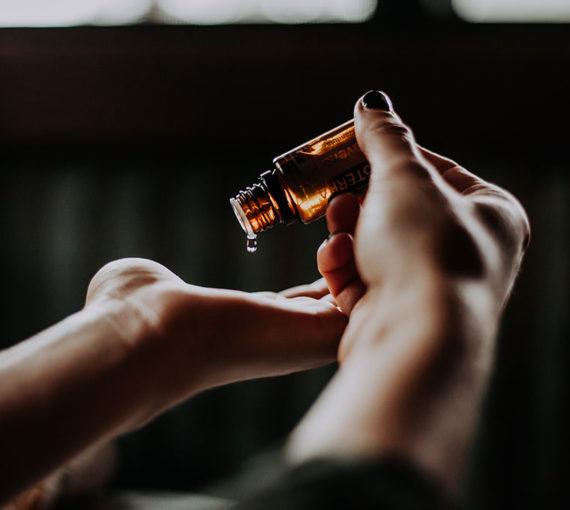
Which essential oils are best?
Thyme inhibits bacterial growth. Cedarwood, lavender, lemongrass, rosemary and tea tree are anti-fungal. You can also try lemon, lime and patchouli essential oils.
Note: Essential oils use a lot of plant material. Their rise in popularity over the last decade has hidden environmental costs. Be sure to source and use them considerately.
All-purpose scour
Cleans tubs, tiles, toilets, sinks and more. Tackles mould and mildew, too.
Time to make: five minutes
Shelf life: about six months
- 420 ml (1 2/3 cups) baking soda
- 60 ml (¼ cup) liquid castile soap
- 60 ml (¼ cup) water
Combine ingredients in a bowl. Stir until the mixture is the consistency of whipped cream. Use immediately, or store in a labelled, air-tight container. Rinse well after applying.
Note: Buy baking soda in bulk and get liquid castile soap from a local refill or zero waste store!
All-purpose powder
As effective in dishwashers as it is on toilets.
Time to make: five minutes
Shelf life: About six months
- 125 ml (½ cup) baking soda
- 125 ml (½ cup) washing soda
- 125 ml (½ cup) white vinegar*
Combine dry ingredients.
For toilet: sprinkle onto surface, scrub and chase with vinegar.
For dishwasher: add dry ingredients to soap dispenser and vinegar to rinse dispenser.
*Tip: Don’t use vinegar on natural stone, waxed wood, cast iron or aluminum. It’s also problematic for rubber dishwasher or washing machine components (check manuals).
Three ways to tackle mould and mildew
That yucky black stuff on bathroom surfaces is a colony of moisture-loving mold spores. It grows on caulking (the squishy stuff that seals your tub to the wall), in grout lines (the hard material between tiles), on shower curtains, tubs and tile surfaces. And it can affect air quality.
1: Make all-purpose scour
Follow the recipe above. Apply with a sponge or rag, let sit for 15 minutes for heavy duty jobs, rinse and wipe clean.
2: Use vinegar
A spray bottle of undiluted white vinegar also works, but be careful. Vinegar is a strong acid that can etch tile or grout. Use it only on the caulking and rinse off well. Do a test patch first.
3: Use liquid oxygen bleach
It’s diluted hydrogen peroxide, found in the laundry aisle of your grocery store. Apply it with a spray bottle or follow the manufacturer’s instructions.
If mould has worked its way behind the caulking, you may have to re-caulk. If you do, choose non-toxic, 100 per cent silicone.
Mould and mildew prevention is key. Get a handle on bathroom humidity. Make sure the fan is Energy Star–rated, fits the size of your bathroom and working properly.

